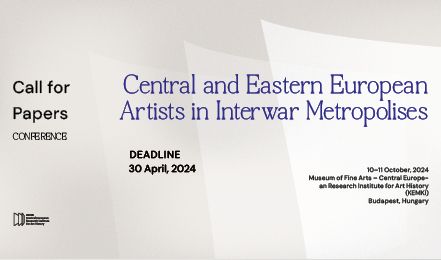‘research based art’
TÓTalJOY díjátadó 2025
The Central European Research Institute for Art History (KEMKI) warmly invites all interested parties to the TÓTalJOY Award ceremony, which will take place on June 24, 2025. Endre Tót and the Central European Research Institute for Art History (KEMKI) established the TÓTalJOY prize for contemporary artists in 2021. The prize derives its name from Endre Tót’s conceptual program centred on the notion of joy, which …
Mit kínálhat a határvidéki internacionalizmus szemlélete a művészettörténészek számára?
… Senior Core Fellow at the Institute for Advanced Studies, CEU) within the framework of KEMKI’s research project on the art of the 1980s. National frameworks and containers are often too narrow to fully grasp the complexities of social, historical, and artistic development. What, then, should replace methodological nationalism—multiculturalism, internationalism, or something else entirely? These questions are particularly pressing when viewed from the perspective of Eastern Europe, a …
TÓTalJOY-díj
Open call Endre Tót and the Central European Research Institute for Art History (KEMKI) established the TÓTalJOY prize for contemporary artists in 2021. The prize derives its name from Endre Tót’s conceptual program centred on the notion of joy, which was launched in the 1970s. His early joy pieces and the actions of the TÓTalJOY series are considered among the most important works representing the narrative of Eastern European conceptual …
CFP: Central and Eastern European Artists in Interwar Metropolises
The motivations for the relocation of Central and Eastern European visual artists to urban centres in the interwar period often followed patterns: those with formal art training included travel as part of their curriculum, financed by various funds or grants; changes in political regimes forced others to leave their home countries for shorter or longer periods; and most enjoyed the help of personal, professional or political networks while abroad. In addition to …
Sešit/Notebook for Art, Theory and Related Zones – Resonances különszám
We are happy to announce that the latest issue of Sešit/Notebook for Art, Theory and Related Zones, the periodical of AVU Research Centre in Prague dedicated to the Resonances project just came out! It comprises articles by Katalin Cseh-Varga, Tomasz Załuski, Gabriela Świtek, Dagmar Svatošová, and Cristian Nae, which are based on the papers presented at the Resonances conferences as well as the editorial by Pavlína Morganová, Marianna Placáková, and Martin …




